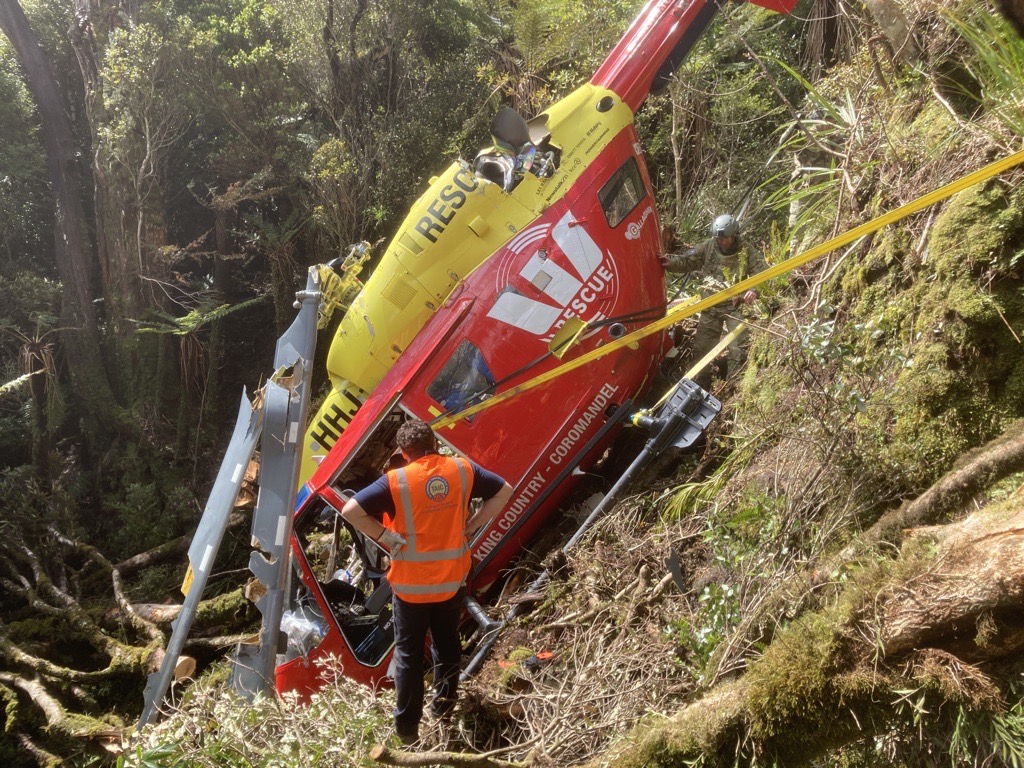
The Transport Accident Investigation Commission (TAIC) has released its final report on the 2023 crash of an air ambulance helicopter on Mount Pirongia.
The investigation has found that the helicopter almost certainly entered a hazardous aerodynamic condition called vortex ring state (VRS) — marking what may be the first time a helicopter accident has been proven to have occurred as a direct result of VRS.
TAIC Chief Investigator of Accidents Naveen Kozhuppakalam says the report provides vital information for all helicopter manufacturers, pilots, operators, and flight schools, showing how VRS can take hold quickly and with little warning, especially in mountainous terrain.
On 19 September 2023, the helicopter flew from Hamilton to recover an injured person on Mount Pirongia. On board were the pilot, a crew member, and a paramedic. The helicopter descended on the windward side of a ridgeline to prepare for a winch rescue. It suddenly lost height and crashed through trees into a steep, forested slope, coming to rest severely damaged just seven metres upslope from a precipice. All three on board escaped injury.
The paramedic promptly attended to the patient and the pilot, crew member and paramedic prepared the patient for winch extraction.
“The cause of the accident was vortex ring state; it’s a flight condition that causes a helicopter to lose lift and its descent rate to increase rapidly,” said Mr Kozhuppakalam.
The pilot believed the helicopter was in level flight, but their attention was focused on the winch site rather than the instruments. Meanwhile, the helicopter's trajectory, descent rate and forward speed, combined with its pitch attitude and air flowing up and over the ridge, created the ideal conditions for VRS to take hold.
“Helicopter pilots receive general training on VRS, but each helicopter type behaves differently,” said Mr Kozhuppakalam. “In this case, VRS onset occurred just 291 feet above ground level – neither the height nor enough time to successfully recover. And the helicopter’s flight manual contained very limited information about the flight conditions and parameters conducive for VRS, or how to avoid and recover from it.
“All helicopter pilots need to clearly understand how VRS develops and how to avoid it,” says Mr Kozhuppakalam.
“Key factors are the helicopter's trajectory, particularly its descent rate and forward speed combined with its pitch attitude and the direction of the wind. Flying in mountainous areas presents more challenges, and pilots need to use all available information, not just what they see outside the cockpit.”
The helicopter’s manufacturer, Kawasaki Heavy Industries Ltd, has issued a safety notice and is updating its flight manual to include a recommended maximum rate of descent. It has also accepted TAIC’s recommendation to include specific VRS data in the manual.
VRS alerting systems are a new technology that can help pilots avoid entering VRS, and TAIC has recommended the Civil Aviation Authority promote discussion at the International Civil Aviation Organization on requiring VRS alert systems in new helicopters. In New Zealand, TAIC recommends CAA promote awareness among helicopter pilots of VRS risks and advocate for more detailed information in all helicopter flight manuals.
